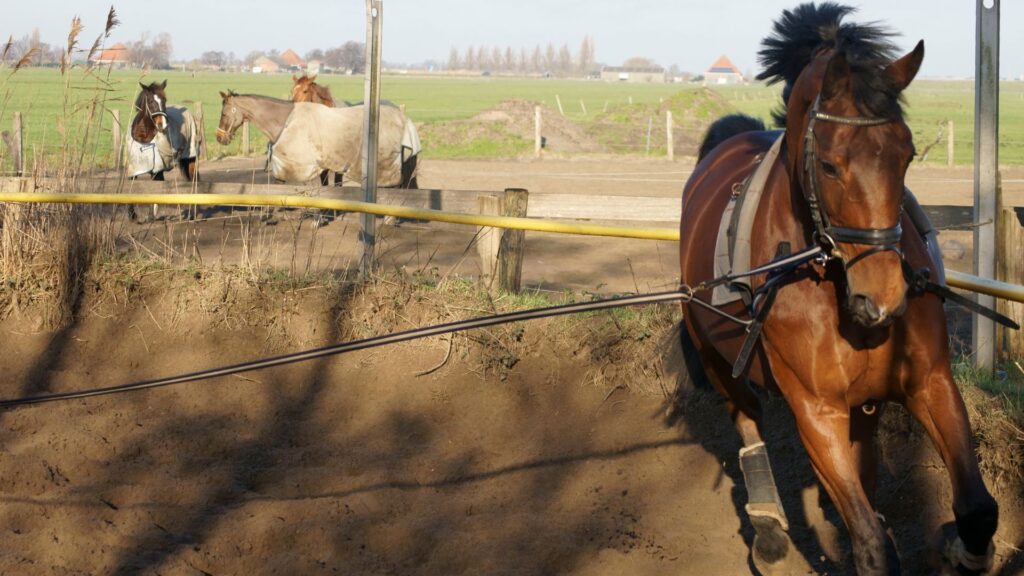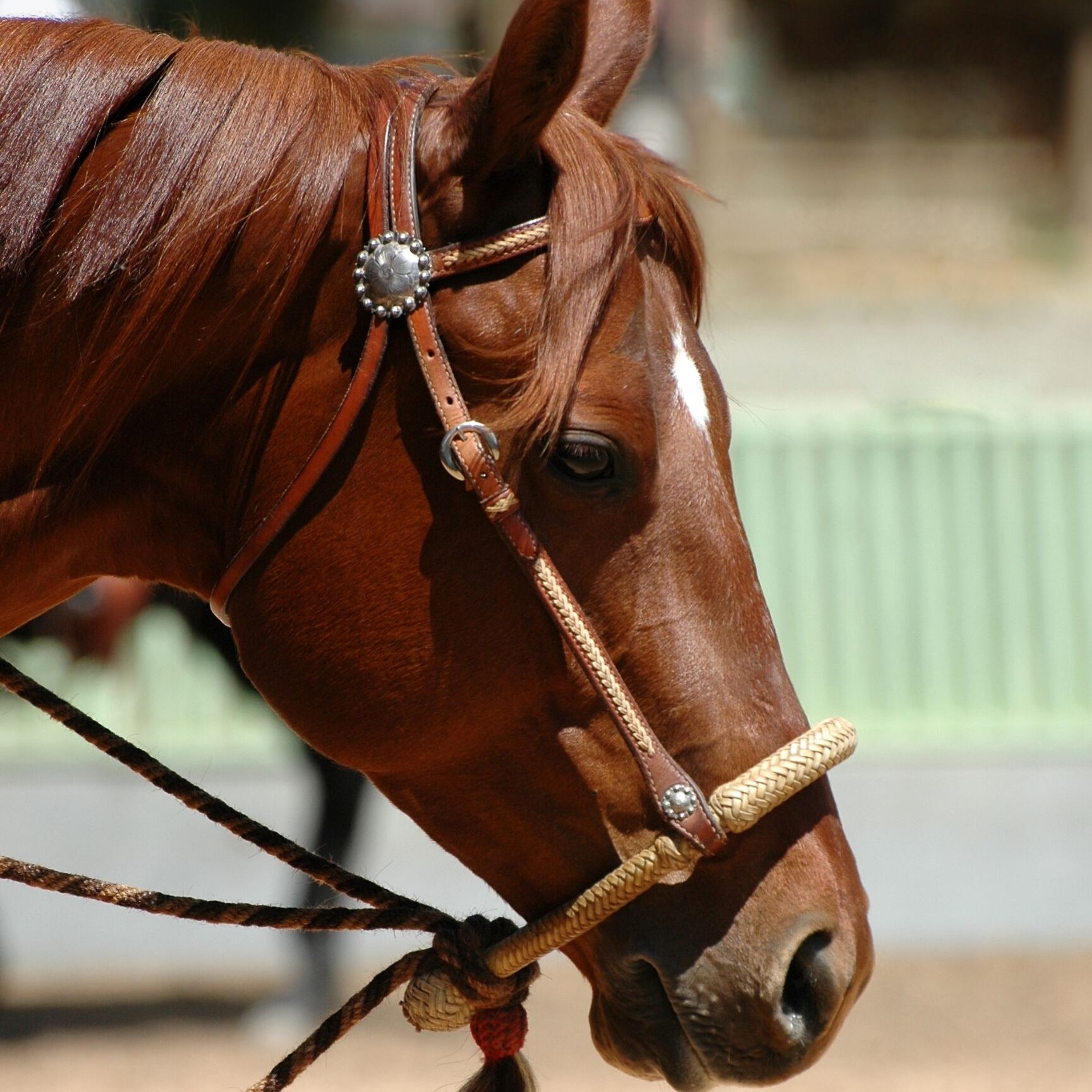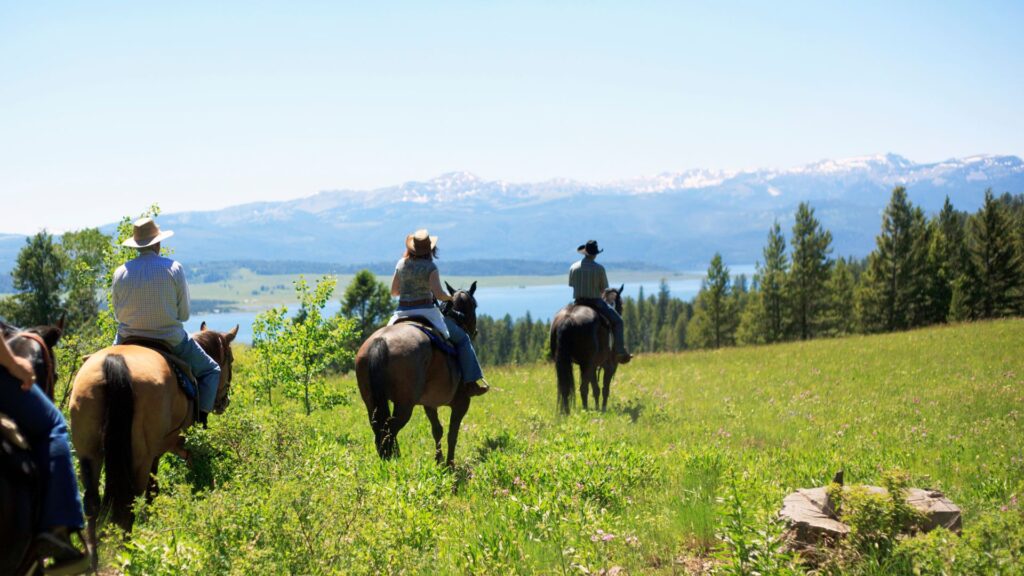Last updated: May 10, 2023
I’ve always been fascinated by the bond between a rider and their horse. One day, while watching my granddaughter compete in Western Pleasure, someone asked her if she had a bridle horse. I was surprised by the question and realized that many people may not be familiar with the unique qualities of these remarkable horses.
Bridle horses are often considered the ultimate equestrian partner because of their natural talent and ability to work closely with their rider. They are specifically trained to give the rider the ultimate connection with their horse. In this article, I will explore the characteristics of a bridle horse, the training process, and the benefits of riding one.
Whether you are a seasoned rider or just starting out, understanding the qualities of a bridle horse can enhance your equestrian experience. Join me as I delve into the world of bridle horses and discover why they are truly the ultimate equestrian partner.
What is a Bridle Horse?
The term “bridle horse” refers to a well-trained horse that responds effortlessly to subtle cues from its rider, primarily through the use of a bridle and bit. Bridle horses have their roots in the centuries-old horsemanship traditions of Spain and Portugal, where they were initially bred and trained for war, cattle work, and high-level equestrian sports.
The vaqueros, skilled Spanish horsemen, and cattle herders, played a significant role in developing the bridle horse tradition. As they migrated to the Americas, their horsemanship style focused on creating highly responsive and light horses, which became the foundation of the bridle horse training we know today.
Over time, these Iberian horses were crossed with other breeds. Their training methods were adopted and adapted by various cultures, including the American cowboy, giving rise to the versatile and highly skilled bridle horses we know today. The influence of the vaquero style can still be seen in various equestrian disciplines, such as western riding, reining, and working equitation, where the focus on lightness and responsiveness continues to be a hallmark of skilled horsemanship.

Training Bridle Horses
If you own a suitable riding horse and are interested in training in the bridle horse tradition, there are several things you can expect during the training process. Training a bridle horse takes time and patience, but the result is a strong bond between horse and rider and a horse that is responsive and willing to work.
The first step is to establish a solid foundation of groundwork with your horse. This includes working on leading, lunging, and desensitization exercises. It is important to establish a strong foundation before moving on to the riding portion of the training.
Once your horse is comfortable with the groundwork, you can begin riding with a bosal. It is important to remember that the bridle should only be used once your horse is comfortable with the saddle and basic riding commands. When introducing the bridle, it is important to use gentle pressure and reward your horse for good behavior.
As you progress in training, you can begin to work on more advanced maneuvers, such as collection and lateral movements. It is important to take your time and not rush your horse through these exercises. Training a bridle horse takes time and patience, and every horse is different in terms of how quickly they learn.

Types of Bridles Used to Train and Finish a Bridle Horse.
Training a bridle horse is a process that begins with the use of a bosal and progresses to the use of a spade bit. Each bridle serves a specific purpose in the training process and is used to gradually introduce the horse to the bridle and refine their responsiveness to the rider’s cues.
Using these bridles in the correct order is crucial to creating a well-trained and responsive bridle horse. In this section, we’ll explore the benefits of using specific bridles for each stage of training and how to progress through each stage to create a true bridle horse.
If you’re looking to learn more about the process of training a bridle horse, Pat Puckett’s YouTube videos are a great resource. Puckett is a well-known bridle horse trainer, and his videos provide a detailed look at the training process from start to finish.
Whether you’re an experienced rider or just starting out, watching Puckett’s videos can provide valuable insight and techniques for creating a well-trained and responsive bridle horse. Here is his YouTube video on Hanging the Spade.
The Bosal or Hackamore
The bosal is a type of bitless bridle that is used in the early stages of training a bridle horse. It consists of a noseband made of braided rawhide or leather that is placed around the horse’s nose, along with a set of reins.
The pressure on the noseband communicates the rider’s cues to the horse. The bosal is often used to introduce the horse to the concept of a bridle and to teach the horse to respond to the rider’s cues before moving on to a bit.
Hanger or Two-Rein
The hanger (also known as the two-rein) bridle is a transitional bridle used during the later stages of bridle horse training. It is designed to help the horse transition from the bosal to the spade bit. The hanger consists of a bosalita (a smaller, more refined version of the bosal) and a set of reins attached to a bit.
The reins on the bosalita are used for direct rein cues, while the reins attached to the bit are used for indirect cues. This allows the horse to gradually become more familiar with the bit while still relying on the bosalita for communication.
Spade Bit
The spade bit is the final stage in bridle horse training, and it requires a high level of skill and experience on the part of both the horse and rider. It is a complex bit that is shaped like a spoon and is designed to fit comfortably in the horse’s mouth.
Before a horse is ready for the spade bit, it must have gone through the previous stages of training with the bosal, bosalita, and hanger (two-rein) bridles. This can take anywhere from several months to several years, depending on the horse’s age, temperament, and natural abilities, as well as the rider’s experience level and training techniques.
Once the horse is ready for the spade bit, the rider must have a deep understanding of the horse’s communication and must use the bit with precision and delicacy. The spade bit is not used for direct rein cues but rather for subtle and indirect cues that require the horse to be highly attuned to the rider’s movements.
The training process for the spade bit can take several years, as it requires the horse to develop a high level of responsiveness and collection. The goal is to create a bridle horse that is light, responsive, and able to perform complex maneuvers with ease and grace.
How Long Does it Take to Train a Bridle Horse?
Overall, the training process for a bridle horse can take several years, depending on the horse and rider’s experience and the training techniques used. However, the end result is a partnership between horse and rider that is based on trust, communication, and mutual respect. A well-trained bridle horse is a joy to ride and can excel in a wide range of equestrian disciplines.

The Characteristics of a Bridle Horse
When discussing the physical characteristics of a bridle horse, the first aspect that comes to mind is its well-proportioned and athletic body. These horses are often medium to large in size, with a strong, muscular build that allows them to perform intricate maneuvers with ease.
The hindquarters are muscular and powerful, which is vital for quick stops and rapid acceleration. Overall, the physical traits of a bridle horse contribute to their excellent agility, balance, and responsiveness.
Importance of Temperament
The ideal bridle horse has a balanced temperament, combining sensitivity and responsiveness with a level-headed and calm disposition. This blend of traits enables them to perform complex maneuvers while staying attuned to their rider’s needs and maintaining a composed demeanor. Horses with strong, steady temperaments are less likely to become overwhelmed or anxious in high-pressure situations, making them reliable partners for advanced equestrian pursuits.
Furthermore, a good temperament fosters a positive and trusting relationship between horse and rider, which is the foundation of successful horsemanship. In essence, a bridle horse’s temperament is the glue that holds together its physical and behavioral traits, making it a truly exceptional equine companion.
Benefits of Riding a Bridle Horse
There are several benefits to riding a bridle horse that make them the ultimate equestrian partner. From comfort and control to competitive advantage, here are some of the key benefits of riding a bridle horse:
A. Comfort and Control: One of the key benefits of riding a bridle horse is the comfort and control it provides. Bridle horses are trained to be ridden with only a bridle, which allows the rider to have a more direct connection with the horse. This results in increased control over the horse’s movements and a more comfortable ride for both horse and rider.
B. Communication and Partnership: Bridle horses are known for their strong bond with their rider and their willingness to work closely with them. This is due in part to the use of gentle training methods and the emphasis on communication between horse and rider. As a result, riding a bridle horse creates a strong partnership between horse and rider, which is essential for success in many equestrian disciplines.
C. Versatility and Adaptability: Bridle horses are versatile and adaptable, which makes them well-suited for a wide range of equestrian disciplines. They are trained to be responsive to their rider’s commands and can adapt to different riding styles and environments. This versatility makes them a valuable asset for riders who participate in multiple disciplines.
D. Competitive Advantage: Finally, riding a bridle horse can give riders a competitive advantage in many equestrian disciplines. Bridle horses are known for their grace, athleticism, and responsiveness, which can set them apart from other horses in competitions. In fact, some equestrian disciplines, such as reining and cutting, require the use of a bridle horse.
Riding a bridle horse provides a comfortable, responsive, and versatile riding experience that creates a strong partnership between horse and rider. Whether you are looking to compete in equestrian competitions or simply enjoy riding, a bridle horse is the ultimate equestrian partner.

Conclusion
Bridles horses are truly the ultimate equestrian partner. They possess unique characteristics, are trained with gentle methods, and provide a comfortable and responsive ride. Through a solid foundation, the breaking process, and advanced training techniques, these horses are transformed into true partners for their riders.
Riding a bridle horse allows for clear communication, partnership, versatility, and adaptability. The bond between a rider and their horse is strengthened, creating a more enjoyable and successful riding experience. Additionally, bridle horses can provide riders with a competitive advantage in many equestrian disciplines.
Whether you are an experienced rider or just starting out, understanding the qualities and training techniques of bridle horses can enhance your equestrian experience. With patience, time, and dedication, anyone can train a bridle horse and develop a strong partnership with their horse. So, take the time to discover the world of bridle horses and unlock the true potential of your equestrian journey.
FAQs
What horse breeds are used for bridle horses?
While any horse breed can potentially be trained as a bridle horse, some breeds are more commonly used due to their natural abilities and conformation. These breeds include the Quarter Horse, the Arabian, the Andalusian, and the Morgan. Ultimately, the horse’s temperament, athleticism, and willingness to learn are more important than the breed when selecting a horse for bridle horse training.

About the Author: Miles Henry
Lifelong Horseman | Racehorse Owner | Published Author
Miles Henry brings over 25 years of hands-on experience training and owning Thoroughbred racehorses. Raised with Quarter Horses and Appaloosas, he’s spent a lifetime learning from horses—on the track, in the barn, and in the field. Today, he runs a small but successful racing stable in Louisiana and shares real-world insights on HorseRacingSense.com, helping horse owners, fans, and bettors navigate the sport with confidence.
📚 Books: View Miles’s books on Amazon »
🎧 Podcast Guest: Animal Tales Ep. 32 |
YouTube Interview
📩 Newsletter: Sign up for racing tips and horse care advice »
🔗 Follow Miles:
Twitter |
Facebook |
YouTube


